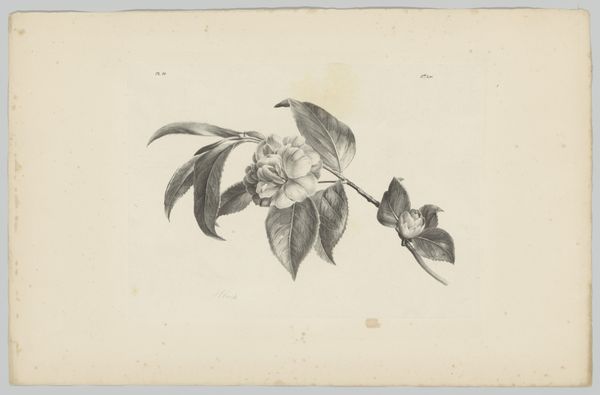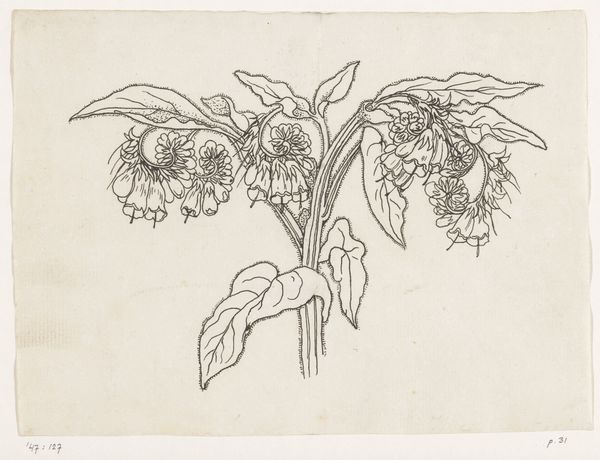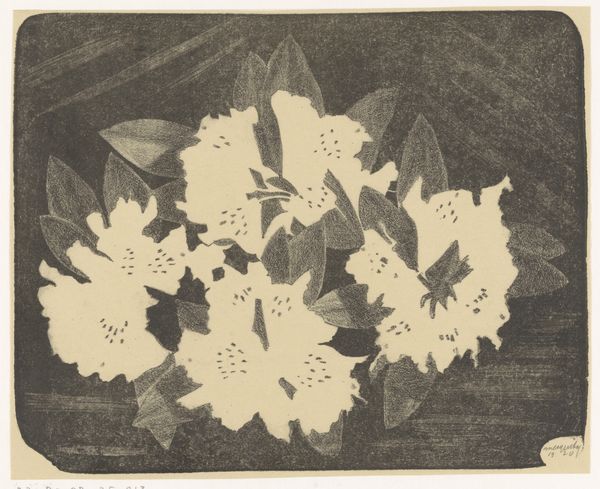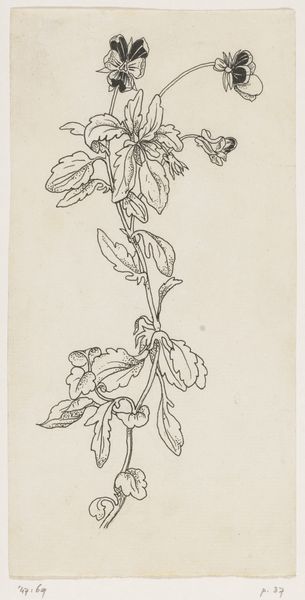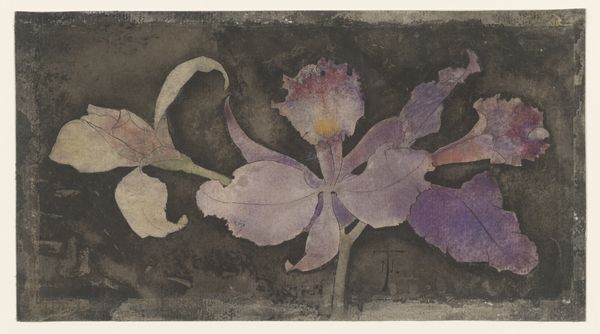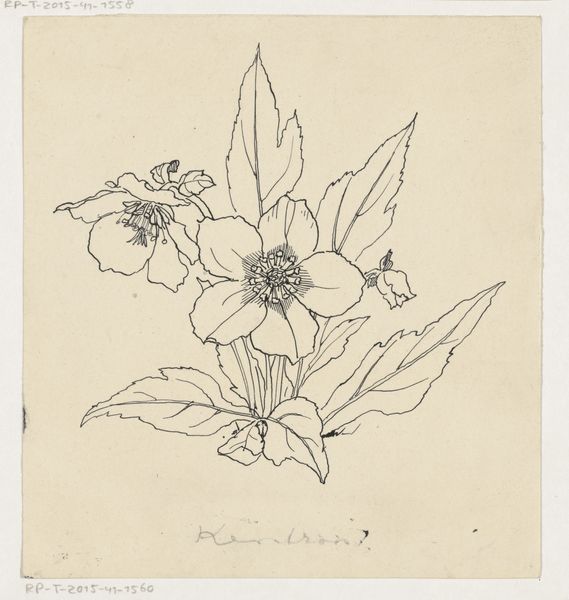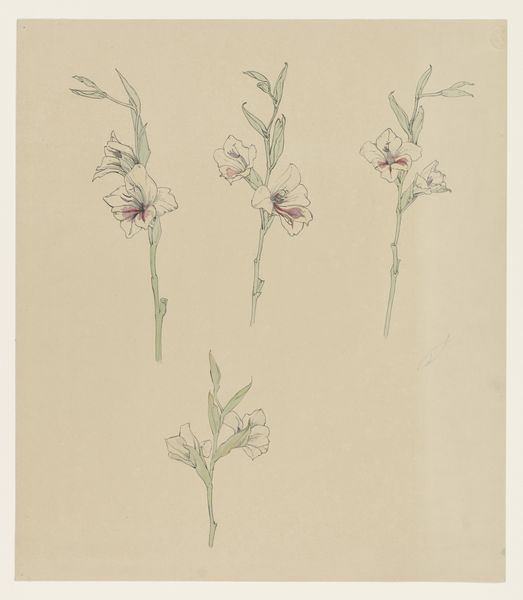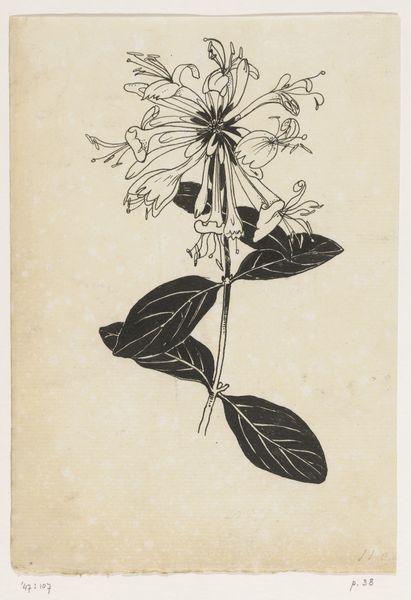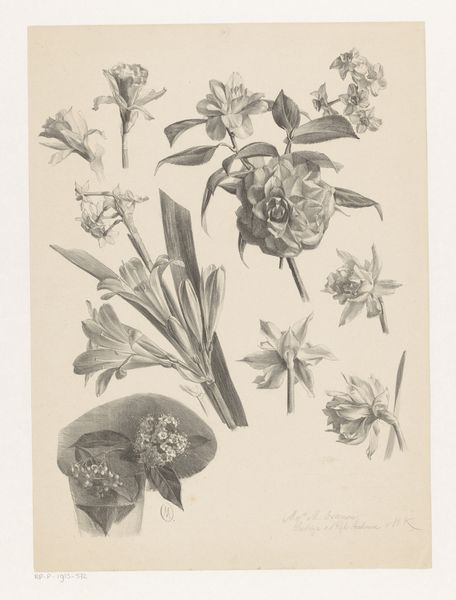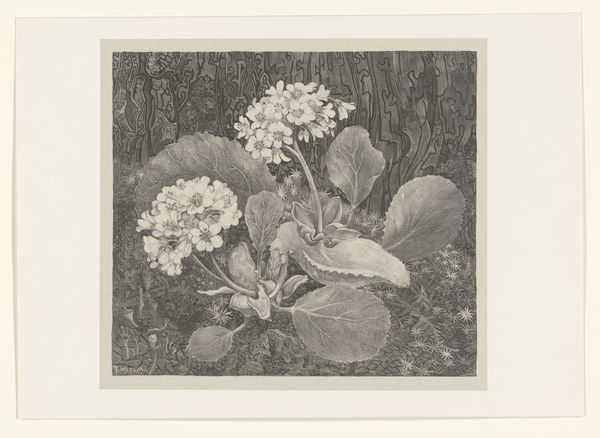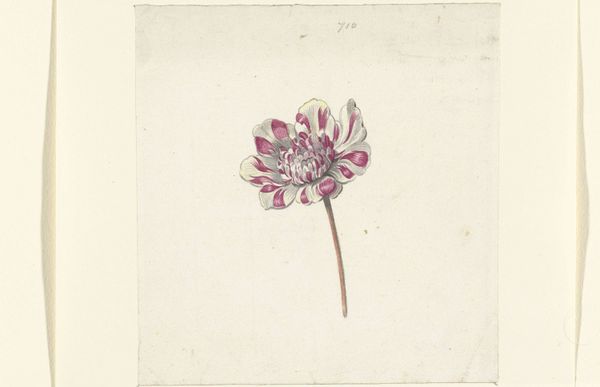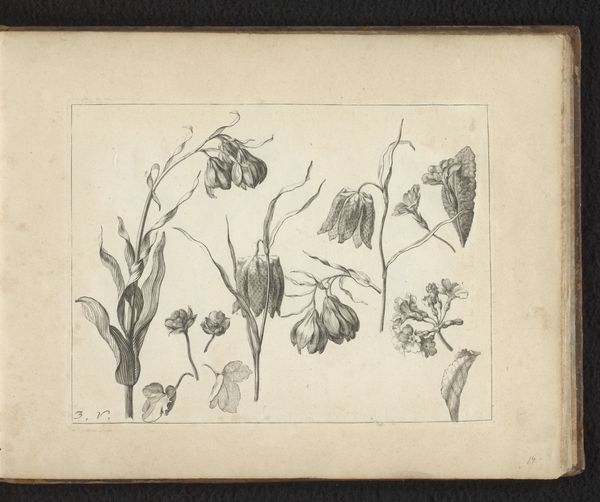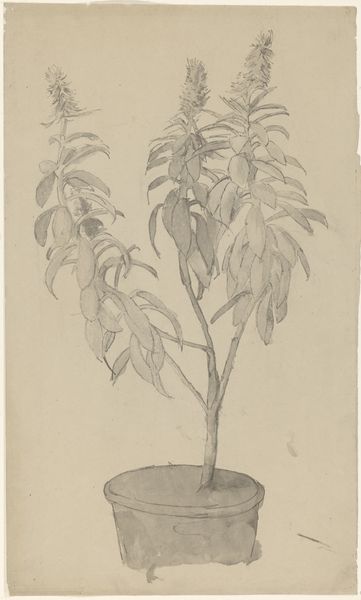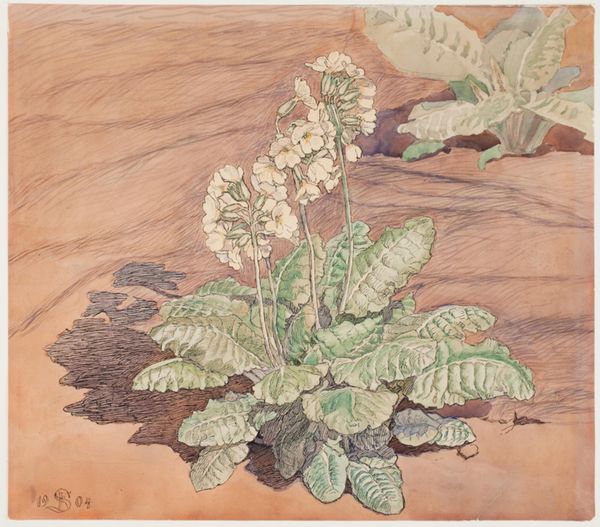
print, paper
# print
#
paper
Dimensions: height 222 mm, width 356 mm
Copyright: Rijks Museum: Open Domain
Curator: This work is titled "Bloeiende orchideeëntak," or "Flowering Orchid Branch," created by Theo Nieuwenhuis sometime between 1876 and 1951. You can find it here at the Rijksmuseum. It’s crafted with ink on paper. Editor: My first impression is that it’s moody. The dark background really makes those delicate orchid blossoms pop, like stars in a night sky. The subdued colors almost give it a dreamlike quality. Curator: Precisely! The artwork reflects the Japonisme movement, which became really influential during Nieuwenhuis's time. The influence of Japanese art and design on Western art is so visible here—you know, the flattened perspective, emphasis on natural motifs, the asymmetrical composition, right? These artists found ways to destabilize academic and colonial traditions in visual culture by drawing on alternative forms of knowledge. Editor: Totally, and it feels so modern. I'm drawn to how Nieuwenhuis captured the essence of the orchids without getting overly detailed. It's almost abstract. It's kind of funny how Westerners at this time used non-Western ideas of representing flowers and plants because suddenly they looked 'realer'. Like, not photorealistic, but closer to my lived reality with them. Curator: Absolutely, that 'essence' also hints at the symbolic weight of orchids in Asian art— representing refinement, luxury, love and beauty. Given Nieuwenhuis's artistic and social circles, he was surely engaging with how those meanings were being negotiated. Editor: It's making me want to start a botanical illustration series myself! Maybe I could even learn something about loving-kindness meditation from an orchid's quiet beauty. It reminds you that just existing in a state of bloom, as vulnerable and exposed as you are, is often enough. Curator: That’s a beautiful way to see it, I hadn’t thought about it like that, but it highlights that artworks engage the present even when they hail from a distant past. They make the political and the personal reflective of one another. Editor: Agreed. What initially struck me as a lovely, kind of gothic floral drawing ended up opening to a broader awareness of my relationship to everything else around me.
Comments
No comments
Be the first to comment and join the conversation on the ultimate creative platform.
